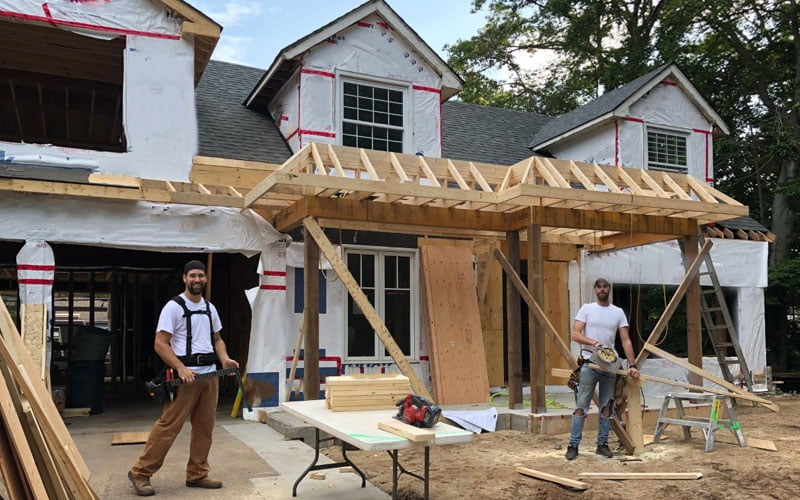Adding an extension to your home is an exciting and transformative project that can significantly enhance your living space, improve functionality, and increase the value of your property. Whether envisioning a new master suite, a spacious kitchen, or a dedicated home office, embarking on a home addition journey requires careful planning, attention to detail, and a well-thought-out approach. In this comprehensive guide at CPP Home Builders & Remodeling in Cape Cod, we will delve deeper into each step of the process to help you achieve your dream home expansion.
Defining Your Vision
Before laying the foundation, it’s essential to crystalize your vision and objectives for the home addition project. Take time to consider the following:
- What specific needs or desires are motivating this expansion?
- How will the new space enhance your daily life and cater to your family’s requirements?
- Have you established a realistic budget that covers all aspects of the project?
- Are there any local zoning regulations, homeowner association rules, or building codes to be aware of?
- Do you plan to enlist the services of a professional architect or designer to help translate your vision into a concrete plan?
Crafting a Detailed Plan
A meticulous plan is the blueprint for your home addition, guiding every project facet. Collaborate with an experienced architect or designer to:
- Develop a comprehensive blueprint outlining the new space’s precise dimensions, layout, and aesthetics.
- Ensure that the addition seamlessly integrates with your home’s existing architecture, creating a harmonious whole.
- Verify that your plan adheres to all relevant local building codes and regulations to prevent setbacks.
Navigating Permits and Approvals
The next crucial step involves obtaining the necessary permits and approvals from local authorities. This may include:
- Zoning permits ensure that your project complies with land-use regulations.
- Building permits grant permission for construction work.
- Scheduled inspections at various stages of construction to ensure compliance with safety and quality standards. Skipping these permits can result in costly delays and legal consequences.
Establishing a Practical Budget
Setting a well-defined and realistic budget is fundamental to the success of your home addition project. Your budget should encompass all expenses, including:
- Construction materials and labour costs.
- Permit fees and associated paperwork.
- Contingency funds to address unexpected challenges or modifications.
- The prices of finishing and furnishing the new space.
Choosing the Right Contractor
Selecting a reputable and experienced contractor is your most critical decision during this journey. Take the following steps to ensure you make the right choice:
- Conduct thorough research by seeking recommendations, reading reviews, and checking references.
- Interview potential contractors to assess their expertise and compatibility with your project.
- Verify credentials, licenses, and insurance coverage.
- Review their past projects to gauge their ability to deliver quality work on time and within budget.
The Construction Phase
Once you’ve selected a contractor and obtained the necessary permits, the construction phase begins. During this period:
- Maintain open communication with your contractor, ensuring you are regularly updated on the project’s progress.
- Monitor your budget closely to identify and address any potential cost overruns.
- Prepare for minor disruptions to your daily routine, as construction activities can be noisy and temporarily impact your living space.
- Prioritize safety precautions to protect both your family and the workers on-site.
Inspections and Final Flourish
After construction, local building authorities will inspect to confirm that your addition complies with all relevant codes and regulations. Once your project passes these inspections, you can add the final touches to your new space, such as:
- Painting and finishing to match your aesthetic preferences.
- Flooring installation can significantly impact the overall look and feel of the area.
- Furnishing and decorating to transform the addition into a functional and welcoming part of your home.
Building a home addition is a journey filled with excitement and potential for transformation. With meticulous planning, a well-defined budget, and collaboration with experienced professionals, you can confidently embark on this adventure to create an expanded living space that fulfils your needs and adds substantial value to your home. Enjoy the process and the remarkable results it will bring to your living environment. Your dream home is just an addition away!
















